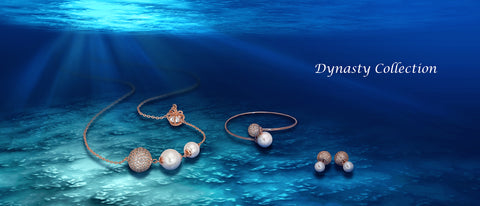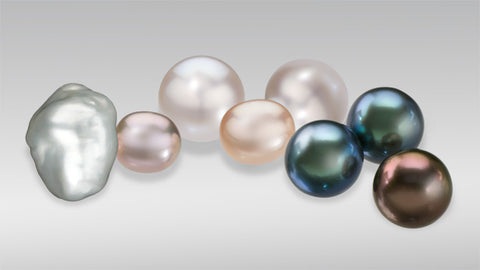A Quick Guide to Pearl Jewellery
Posted by Sarah Lynch on

Did you know that the Pica LéLa jewellery brand has its heritage in fine jewellery? Well, true story! With this fine jewellery heritage the Pica LéLa team has a true passion for quality and craftsmanship and we also know a little bit about our gems. On reading some different blogs and guides online about pearl jewellery I realized that I had to wade through a lot of information. So I thought I would compile a quick guide to pearl jewellery based on some Frequently Asked Questions.
What are Pearls?
Pearls are natural gems that are formed within living organisms, namely molluscs and usually oysters, clams and mussels.
How are Pearls formed?
A natural pearl is essentially the result of a mollusc’s defence mechanism against irritation. Like having a splinter in your finger! When an outside deposit such as sand or parasite makes its way into the mollusc, the mollusc protects itself by covering this potentially threatening deposit in layers of the mineral nacre (also known as mother-of-pearl).
Cultured pearls are formed in a similar way BUT the initial deposit or irritant is not a natural substance and rather planted in by pearl farmers and is usually in the form of a bead or piece of shell.
Prefer to watch a quick video? Here’s one from NatGeoWild explaining the process.
https://www.youtube.com/watch?v=m07OvPEoR6g
What are the different types of Pearl?
There are 3 types of pearl. Natural, cultured and imitation pearls.

Natural Pearls are those which occur spontaneously in the wild and which are very rare as today most of them have already been harvested.
Cultured Pearls are those that are grown by pearl farmers and can be found in saltwater or freshwater. There are 4 main sources of cultured pearls, as follows:
- Akoya – Grown in Japanese and Chinese waters.
- South Sea - From Australia, Indonesia, and the Philippines.
- Tahitian - Cultivated primarily around the islands of French Polynesia.
- Freshwater - Cultured in freshwater lakes and ponds, namely from China and the US.
Imitation Pearls where in most cases, a glass bead is dipped into a solution made from fish scales. This coating may eventually wear off.
How do I know if my Pearls are real?
To truely know you would need to x-ray the pearl using a gemological x-ray. The center of a natural pearl should show growth rings. Without this another simple (but inconclusive) way to check is to rub 2 pearls against each other or rub against your teeth. A natural pearl should feel slightly gritty whereas imitation pearls are completely smooth.
Are coloured Pearls real?
Yes. Pearls come in a variety of colours but namely white, pink, silver, cream, golden, green, blue and black.

How can you tell the value of a pearl?
Although cultured and natural pearls can be considered as being of the same quality, natural pearls are more expensive as they are rarer.
A pearl’s value is based on a combination of lustre, size, colour, symmetry and lack of surface flaws with lustre being widely considered as the most important factor. All other factors being equal then size will be the determining factor.
How should I care for my Pearls?
- Wear your pearls! The natural oil your skin creates will keep the lustre nice and shiny and prevent your pearls from going dull.
- However, as per with any jewellery they should be the last thing that you put on so that you don’t get any perfume, sprays or makeup on them.
- Do not put in contact with any harsh chemicals.
- Clean only with a soft cloth. Do not use a commercial jewellery cleaner. Every now and again use a mild soap and water solution (but don’t submerge the pearls – use a soft cloth).
- Keep in a soft pouch and away from other jewellery which may scratch the fragile nacre.
Share this post
- Tags: buying pearls, caring for pearls, faq pearls, guide to pearls, how are pearls formed, natural v cultured pearls, pearl facts, pearl jewellery, types of pearls
